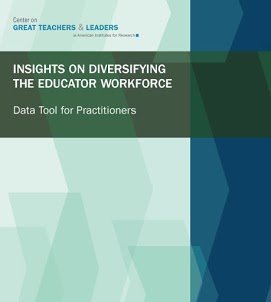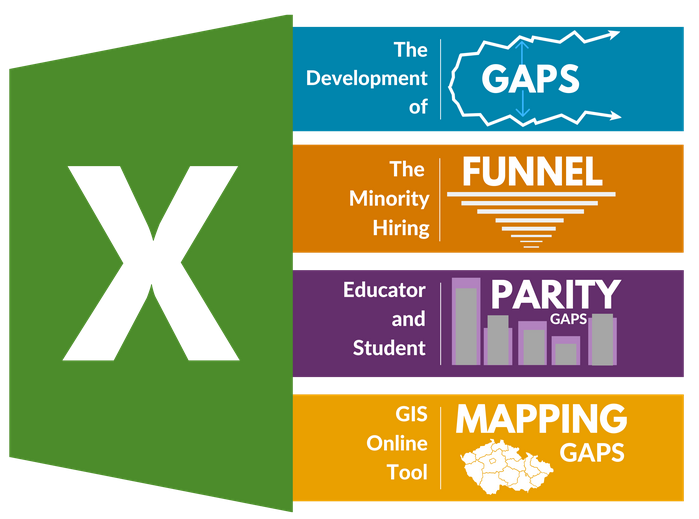Insights on Diversifying the Educator Workforce
Grounding Your Diversifying Efforts In Data
Many states struggle to attract and retain an educator workforce that reflects the diversity of their student population. The GTL Center's data tool helps states understand the underlying causes of their diversity gaps. Use this free, user-friendly, Excel-based tool to identify and visualize diversity gaps across the entire career continuum, from "future teachers" graduating from high-school and entering preparation programs, to preservice teachers entering the educator workforce, and growing and developing into experienced classroom instructors.
State education agencies, educator preparation programs (EPPs), regional education agencies, and districts can use the data tool to do the following:
- Reveal insights about the diversity of the educator workforce at the state, district, school, or EPP level.
- Identify the main drivers behind the existing disparities between the educator workforce and K-12 student populations.
- Pinpoint crucial points across the educator career continuum where implementing carefully selected strategies can help diversify the educator workforce and improve equitable access.
Looking for Support?

We offer services to support use of this tool, including:
- Expert Consultation
- Single or Multi-Day Workshops
- Supports for Action Planning and Early Implementation
Download the Data Tool
The Data Tool is available as a set of three Excel workbooks, one for each different potential user role (see below). Users enter their own data directly into the workbook, which automatically generates easy-to-understand graphs and charts that visualize disparities in educator workforce diversity.
Download the Tool By User Role
|
|
State Version |
|
|
EPP Version |
|
|
District Version |
Download Detailed Guidance
 The Data Tool Guidebook offers users detailed instructions and descriptions for using the Data Tool. It serves as a supplemental document to help users understand the purpose of the tool and how to use it in context.
The Data Tool Guidebook offers users detailed instructions and descriptions for using the Data Tool. It serves as a supplemental document to help users understand the purpose of the tool and how to use it in context.
What's Inside the Data Tool?
The Data Tool supports users in examining educator workforce diversity gaps through four distinct lenses, each with an associated chart, enabling practitioners to develop a deeper understanding of the gaps in their systems by exploring the problem from multiple data-based perspectives.
Type of Charts

Description
This chart focuses on the educator career continuum, charting the differences between the number of White educators and educators of color in the workforce as they progress through the career continuum.
This chart focuses on the e educator career continuum specifically for educators of color, identifying the most significant moments of attrition.
This chart focuses on the classroom, identifying racial disparities in composition between the student and teacher populations.
This chart utilizes GIS data via an online tool to explore teacher and student ethnicity data at both the state and district levels. The tool generates easy-to-read maps to help users understand the role of geography in diversity gaps.
Data Tool Demonstration
The Data Tool supports users in examining educator workforce diversity gaps through four distinct lenses, each with an associated chart, enabling practitioners to develop a deeper understanding of the gaps in their systems by exploring the problem from multiple data-based perspectives.
Featured Project
Diversifying the Educator Workforce in Ohio
The Ohio Department of Education worked with a group of 40 stakeholders as well as the GTL Center and the Great Lakes Comprehensive Center to develop concrete strategies for diversifying the state's educator workforce. Using the GTL Center's Diversifying the Educator Workforce Data Tool, the group is completing a four-step process that starts with first examining the state's educator workforce data to identify diversity gaps and exploring the root causes behind those gaps.





